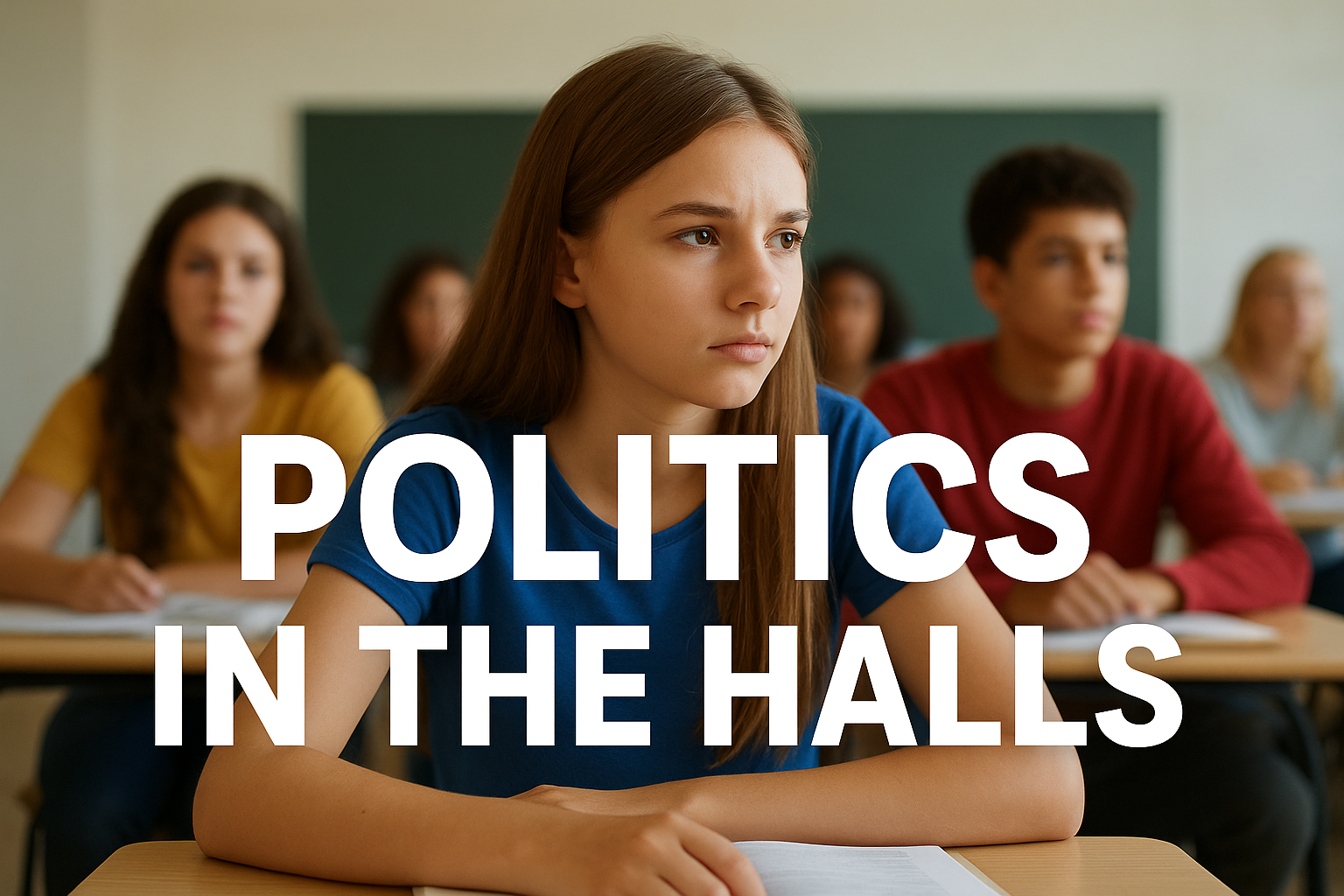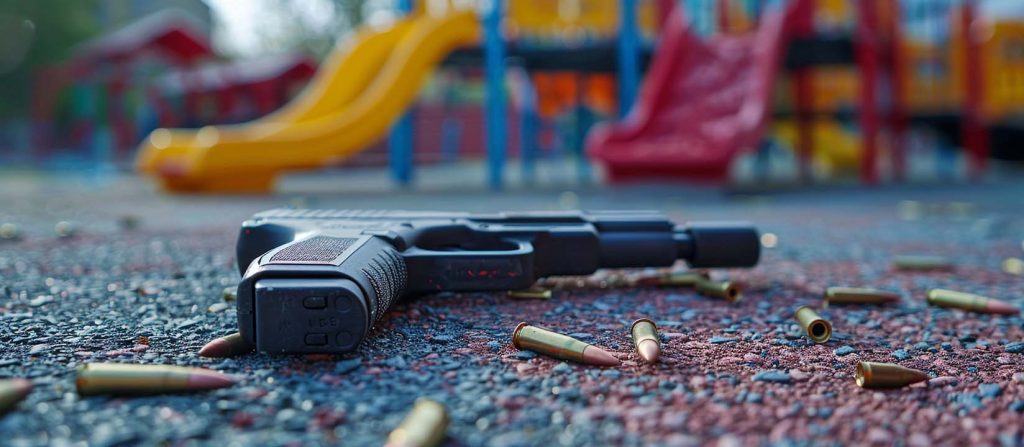

Navigating the Currents of Change: Trends in School Discipline
Parents in Boone County, Kentucky, were outraged this past January when a ninth grader who had been suspended a year earlier for threatening violence against his fellow students returned to class as soon as his punishment time was up.
The parents packed a school board meeting, excoriating the county superintendent and other officials for the decision and calling for change. By March, change had come from the state capitol in Frankfort: Kentucky enacted a new school discipline law that makes it easier to suspend students and harder for them to get back into the classroom.
“The kid had a ‘kill list’ which named students — friends he was going to kill,” Republican state Rep. Steve Rawlings, R-Burlington, who represents Boone County and championed the new law, said in an interview with Stateline. “The superintendent felt pressure to return him to class after a one-year suspension.”
Kentucky is one of several states to enact stricter punishments for disruptive students amid a post-pandemic spike in school discipline problems. Eight states have considered student discipline legislation this year, according to law professor Thalia González, co-director of the Center for Racial and Economic Justice at the University of California Law San Francisco, who tracks the bills. Arizona, Florida, Nevada and West Virginia joined Kentucky in approving new laws, while lawmakers in Nebraska, North Carolina and Texas considered them.
In 2014, the Obama administration issued guidelines urging school districts to use suspension and expulsion “only as a last resort and for appropriately serious infractions,” noting that “youths of color and youths with disabilities are disproportionately impacted” by those punishments. Even though the Trump administration rescinded the guidelines in 2018, many schools continued to follow the earlier guidance.
Critics of suspensions and expulsions cite research showing that school officials are more likely to hand them out to students of color, disabled students and English learners. They also point to studies showing that students who are suspended or expelled are more likely to end up in the criminal justice system.
Instead, many districts placed a greater emphasis on counseling and advising disruptive students. In some places, the approach included a so-called restorative justice strategy that gives classmates the opportunity to tell disruptive students how their behavior is harming everyone.
But now, as they grapple with students whose socialization skills suffered during the isolation of pandemic lockdowns, many school districts and states are reviving stricter strategies. In some places, school shootings and the so-called parents’ rights movement have helped fuel the shift.
Kentucky’s new law states that students can be suspended or expelled from school for, among other things, “willful disobedience or defiance of the authority of the teachers or administrators”; using profanity; assaulting another student or a member of the school staff; threatening violence; using alcohol or drugs; or defacing school property. And it requires schools to expel students for at least a year for threatening violence or bringing a weapon to school.
The law also requires “disciplinary actions, up to and including expulsion” for dealing prescription drugs at school and assaulting other students or school personnel on school property or at school functions.
Carrie Ballinger, superintendent of Rockcastle County Public Schools, testified at a February committee hearing that the Kentucky measure would give administrators more flexibility in dealing with student punishments, including suspensions.
“What happens a year later, when that suspension is complete, and that student comes back into my district? There’s no soft landing for these students. They go from being expelled to placed right back in our classroom,” she said. Ballinger endorsed the measure’s alternatives, such as virtual instruction, to allow the district to keep tabs on students who have been disciplined while protecting other students and staff.
While the vote in Kentucky was overwhelming and bipartisan, Louisville Metro Council member Kumar Rashad spoke against the bill in the hearing, noting that students of color are disproportionately suspended and suggesting that ratcheting up the punishment might lead to an increase in crime.
“We are disproportionately represented when it comes to disciplinary issues, and we have to be really careful,” said Rashad, who is also a teacher in Louisville. “When we talk about expelling the student for a whole year, that’s going to send these students out on the street. You want crime to go up? Let’s do that.”
Other Approaches
A 2019 study by González, of the Center for Racial and Economic Justice, and others asserts that “punitive, exclusionary, and zero tolerance approaches (e.g., suspensions, expulsions, and use of force by school resource officers) not only deny students important educational opportunities, but also may compound existing social, economic, and health disparities.”
The researchers also noted that such punishments “can compound health inequities for marginalized students (i.e., students of color, LGBTQ+ youth, and/or students with disabilities) who already experience higher rates of adverse childhood experiences and other traumas.”
A pair of 2021 papers from Rice University’s Houston Education Research Consortium found that Houston students who were suspended were more likely to be involved in the juvenile justice system both before and after a suspension. The study also found that students were at the greatest risk of suspension in the ninth grade, at the beginning of the transition to high school.
Erin Baumgartner, director of the Houston Education Research Consortium, said in an interview with Stateline that suspensions prompt many students to drop out, often dooming them to a life of low earnings and dead-end jobs. She said that positive behavioral programs such as restorative justice are a better strategy.
But lawmakers in some states are increasingly disinclined to follow that advice.
In Nevada, lawmakers this year repealed a 2019 law that required schools to try restorative justice before expelling a student. Instead, the state enacted a new law laying out tough penalties for misbehavior, including requiring the suspension of students who are 8 or older who bring a firearm to school. The law states that students younger than that may be suspended for the same offense.
A new West Virginia law states that teachers of students in sixth through 12th grades have the authority to remove disruptive students from the classroom. If a student is removed three times in a month, the principal can issue a suspension or place the student in an alternative learning center.
“We are in a period of retrenchment in this country,” said González. “There’s a new climate around school discipline because of the rhetoric [on the political right].”
Schoolwide Impact
But Rawlings, the Kentucky lawmaker, said a tougher approach is necessary. In Boone County, he said, many teachers reported feeling unsafe in the classroom, which hurts recruitment and retention at an already difficult time coming out of the pandemic years. He noted that some Democrats, including Gov. Andy Beshear, supported the changes.
Before, Rawlings said, “teachers felt that under Kentucky law they were constrained. They had to keep the student in the classroom. The new law allows teachers to go through a process, which involves parents and principals, and a series of steps to put that [disruptive] child in an alternative setting.”
Beshear told local reporters he signed the bill because of safety concerns “at a time when we’ve seen some really scary incidents across the country,” according to The Associated Press.
Similar arguments carried the day in West Virginia, said state Rep. Marty Gearheart, a Republican and the House majority whip.
Gearheart, a sponsor of the bill, said teachers, principals and other school officials were adamant that something had to be done to tame disruptive classroom behavior.
“What was happening, you would have a class with 20 children in it. There would be one child in that class whose mission wasn’t to receive information that day, it was simply to be disruptive,” he said in an interview. A teacher would send the kid out of class, he said, but that student would shortly return, only to disrupt the class again.
“When someone is disruptive to the point where you can’t teach or learn, you have to get that student out of the classroom,” he said.
Following the Uvalde school shooting last year, Texas lawmakers opened debate on a group of school discipline bills, among them a measure to allow students to be removed from school based on just one disruptive incident — including harassing a school staff member — and to allow longer suspensions.
The bill’s sponsor, Republican state Sen. Charles Perry, stirred controversy when he said that “not all kids belong in the classroom anymore.” (A review of the case showed the Uvalde shooter wasn’t considered disruptive in school, but had been expelled in ninth grade for truancy, several years before the shooting.) None of the bills passed in this year’s session.
The argument that all students suffer when one is being disruptive won out in states that approved the new laws. However, a study this year by researchers at the University of Michigan and Harvard University found that eliminating suspensions resulted in higher test scores for the entire school population.
Using data beginning in 2012, when New York City eliminated suspensions for nonviolent disorderly behavior, researchers Ashley Craig and David Martin found that replacing suspensions with “less disruptive” punishments such as short-term removals from class led to slight increases in both math and reading scores over three years. They attributed the rise to a change in school culture, with the more supportive punishments enhancing student-teacher relationships and perceptions of school safety.
“I think one set of concerns that the paper speaks to directly, is that we might see decreases in student achievement [if schools go back to suspensions],” Martin said in an interview. “In New York City schools … reducing suspensions by a fairly small amount improved test scores at those schools. The concern would be if you go in the other direction, back to higher suspension levels, you might see test score losses.”
Dig Deeper With Our Longreads
Newsletter Sign up to get our best longform features, investigations, and thought-provoking essays, in your inbox every Sunday.
The MEN was founded by John Huber in the fall of 2020. It was founded to provide a platform for expert opinion and commentary on current issues that directly or indirectly affect education. All opinions are valued and accepted providing they are expressed in a professional manner. The Maryland Education Network consists of Blogs, Videos, and other interaction among the K-12 community.









